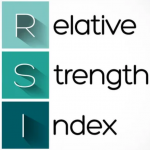The Consumer Price Index is an essential concept in the financial world. However, many people have no idea of what it is, even though it’s very important to understand inflation.
Read on and find out what the Consumer Price Index refers to, how it’s used, what it includes, and much more.
Table of Contents
- What Is the Consumer Price Index?
- Key Concepts to Understand the Consumer Price Index
- What Does the Consumer Price Index Cover?
- How Is the Consumer Price Index Used?
- What Are the Types of Consumer Price Index?
- What Is the Consumer Price Index Regional Data?
- What Are the Critiques to the Consumer Price Index Method?
- Conclusion
What Is the Consumer Price Index?
The Consumer Price Index is one of the most important concepts to consider in the finance world. It is a measure designed to determine the weighted average of all prices of specific consumer services or goods, for example, food, medical care, and transportation.
There is a specific process to calculate the Consumer Price Index, but the basics of it include taking each element in the goods basket and averaging them.
Even though the Consumer Price Index might sound like a foreign concept for some, it’s very important because it helps calculate the average cost of living. Additionally, it’s often used to determine deflation and inflation periods.
Key Concepts to Understand the Consumer Price Index
To better comprehend how the Consumer Price Index functions, there are several concepts and characteristics you must keep in mind. Take a look at them:
Inflation
Despite the fact that it’s one of the essential definitions of the financial world, it might surprise you to know that many people have no idea of what inflation is.
Inflation refers to a decline in the power of purchase of a specific currency over time. Alternatively, it’s also a general rise in all prices.
What the Consumer Price Index Measures?
The Consumer Price Index is related to inflation in a crucial way because it allows detecting nuances. Also known as CPI, it helps identify changes in the average prices people pay for services or goods.
Therefore, the Consumer Price Index works as a measure to quantify how much people have to spend to live. In turn, that allows entities to understand a currency’s purchasing power.
The BLS’ Reports
In the United States, an entity called the Bureau of Labor Statistics takes care of reporting the Consumer Price Index on a monthly basis, and it has done so since 1913.
What Does the Consumer Price Index Cover?
Not everything is covered by the Consumer Price Index. A common example of that is that it doesn’t include stocks and similar investments, and in many cases, it excludes foreign visitors spending money.
In other words, the Consumer Price Index focuses mainly on the price variations that goods and services show. It doesn’t deal with savings, investments, foreign travelers, or similar matters.
Furthermore, the CPI covers unemployed people, self-employed ones, retired populations still in the country, and people whose incomes are considered below the federal poverty threshold.
On the contrary, it excludes farm families, incarcerated people, mental hospital patients, armed forces, and rural populations.
How Is the Consumer Price Index Used?
The CPI is one of the essential economic indicators a country can use. Since it’s designed to measure a currency’s purchasing power, it’s a common way to determine its impact on other currencies and nations.
In most cases, the Consumer Price Index is also a great tool for the government. As the responsible entity, the government must take it into account to predict fluctuations in the economic sector.
Additionally, the government can also use the Consumer Price Index to make informed decisions and change economic policies. In other words, the CPI can act as a guide, so the people in charge can implement solutions to the issues and prevent future problems.
At the same time, the Consumer Price Index can be used to deflate other economic indicators, such as hourly or weekly earnings and retail sales.
Lastly, the Consumer Price Index is a handy tool to determine the eligibility levels of someone opting for government assistance, for example, social security.
What Are the Types of Consumer Price Index?
You can find two distinct Consumer Price Index kinds, which are reported by the BLS on each period. Each of them has different characteristics.
On the one hand, the CPI-W takes care of measuring the Consumer Price Index for clerical workers and urban age earners.
The CPI-W is often a reflection of the changes in the benefits costs paid to people on social security. Likewise, it represents at least 27 or 28% of the population of the country.
Alternatively, the CPI-U refers to the Consumer Price Index of the Urban Population, which makes up 82% of the country’s population. It’s often considered a much better representation of the public, at least taking into account a general perspective.
What Is the Consumer Price Index Regional Data?
The BLS communicates the Consumer Price Index depending on its two subtypes, but it can also include regional information to highlight its specific aspects.
To divide the regional data, the BLS breaks the report into four different sections for Census: west, south, midwest, and northeast.
At the same time, each month, three metro areas are often broken down in detail: New York, NY-Northern NJ-Long Island, NY; Chicago, IL-Gary, IN-Kenosha, WI, and Los Angeles, CA-Riverside, CA-Orange County, CA.
What Are the Critiques to the Consumer Price Index Method?
Even though the Consumer Price Index is considered a key concept to understand inflation, for several years it has been debated whether or not it is accurate enough, and if it understates or overstates the phenomenon.
The main issue with that critique is that economists don’t agree on the methods to measure inflation. Therefore, while some believe the Consumer Price Index is useful, others think it’s not.
Clearly, over the years, the BLS and other competent entities have revised the method to measure the Consumer Price Index. Thus, it’s much more accurate now than before. Even so, there are polarizing views on the subject.
Conclusion
The Consumer Price Index is an important concept to understand inflation, even though not everyone agrees in every single detail about it. It also helps comprehend how much money is needed to live, and aids government entities in creating economic policies.
WeInvests is a financial portal-based research agency. We do our utmost best to offer reliable and unbiased information about crypto, finance, trading and stocks. However, we do not offer financial advice and users should always carry out their own research.
Read More







